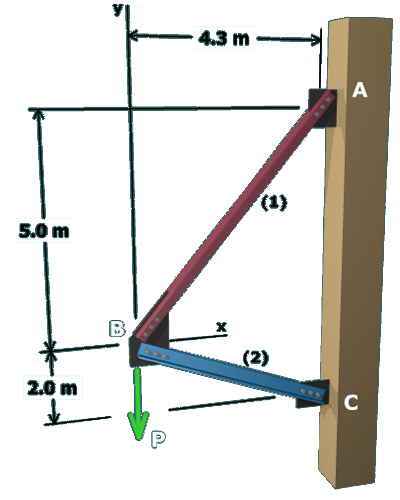A trial-and-error approach can be used to determine the maximum allowable load :
5. If the computed force in member (2) is less than its allowable force,
the original assumption has been proved correct — member (1) actually does control the load capacity of the structure.
No further calculations are necessary. The maximum allowable load for the structure is the value computed in step 3.
